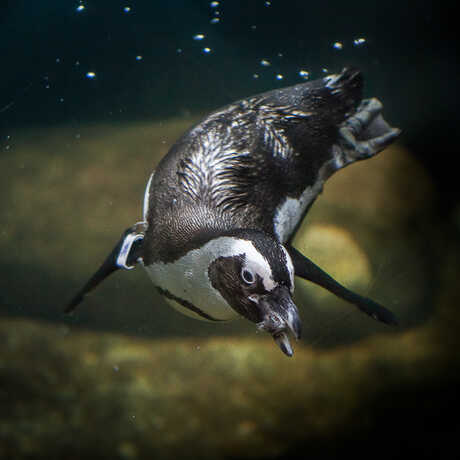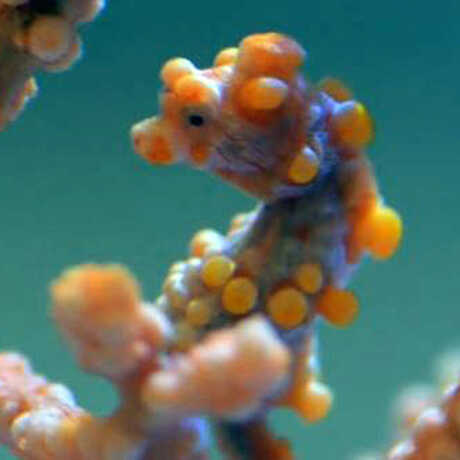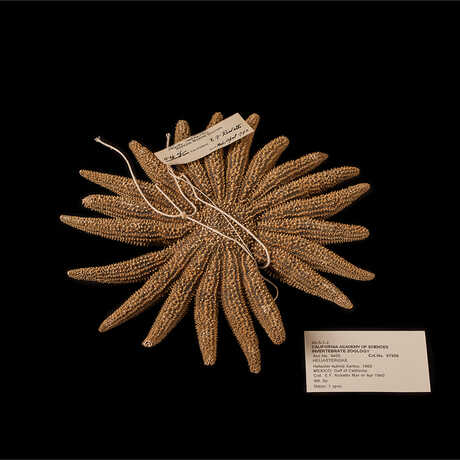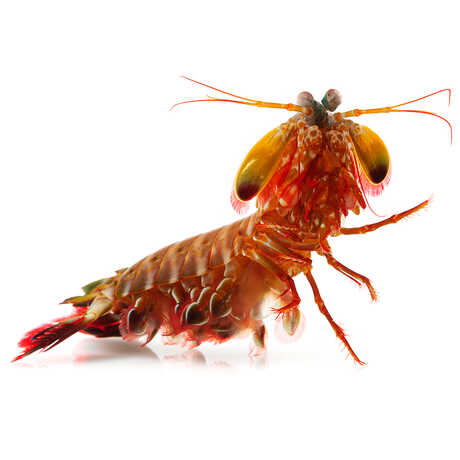Leafy Seadragon
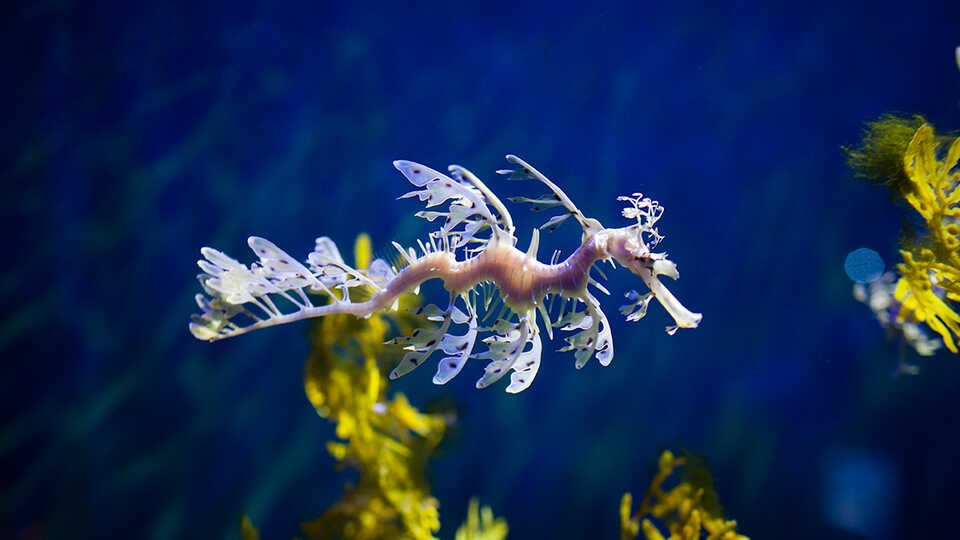
Please note: This animal is not currently on exhibit.
Should you find yourself doing some undersea surveying off the southern and western coasts of Australia, you’d be forgiven for overlooking the leafy seadragon (Phycodurus eques). Not to be confused with the weedy seadragon, its comparatively clean-cut cousin, the leafy seadragon—“leafie” to its countrymen—is covered from head to tail with skin filaments that look like leaves, allowing it to blend into the kelp beds it calls home. The leafy seadragon can also change color depending on how deep down it goes; it’s even been known to stay still for nearly three days at a time, just drifting along with the current.
The leafy seadragon’s next-level powers of camouflage allow it to go undetected by both predators (larger fish, mostly) and its prey, which includes plankton, larval fish, and various tiny crustaceans. It feeds on these unsuspecting micro-creatures by sucking up thousands of them each day through its long, tubular snout. With no teeth and no stomach, it needs to make up in quantity what it can’t handle in size or variety.
Seadragons reach sexual maturity at around 28 months, and congregate each winter to find mates; the rest of the time, they lead a basically solitary life among the weeds, living for anywhere between five and ten years. Unfortunately, largely because of human impact (including trade in seadragons as souvenirs and alternative medicine ingredients), populations are diminishing, calling for government-supported conservation measures. Though the fuss does bring a certain celebrity: the leafy seadragon is the official state fish of South Australia.
Range and Conservation Status
Due to habitat destruction, pollution, and poaching, seadragon numbers are declining in the wild; the species was listed as Near-Threatened (NT) on the IUCN Red List in 2006. It is fully protected under Australian law; since 1987, the government has allowed one pregnant male to be collected each year, and for his hatchlings to be exported for education and research.
Gestation
Like seahorses, leafy seadragon dads bear most of the parenting responsibilities. However, while seahorse fathers carry fertilized eggs in a pouch on their bellies, male seadragons use an exposed spongy patch beneath their tails, incubating up to 300 eggs at a time. After nine weeks, dad pumps and shakes his tail to hatch his offspring; the delivery can take up to two days. Only about 5 percent of the eggs survive, but those that do are independent as soon as they’re born.
Mobility
When not practicing its guru-like mastery of stillness, the leafy seadragon moves using transparent fins on its neck and near its tail. It uses the more visible fins on its head for steering and turning, and its leaflike filaments for balance and buoyancy. With no actual tail fin, the seadragon is a slow mover—it’s been clocked at up to 490 feet per hour—but even when far from home, a surprisingly strong sense of direction helps it find its way back.
Be mesmerized by colorful coral reef fish, soaring stingrays, and adorable African penguins—streaming live to your device, 24/7.
